
|
#581
|
||||
|
||||
 Michael Nyqvist, 'Dragon Tattoo' Star, Dies at 56 1:35 PM PDT 6/27/2017 by Etan Vlessing The Swedish actor also starred in 'John Wick' and 'Mission: Impossible — Ghost Protocol.' Michael Nyqvist, who starred as Mikael Blomkvist opposite Noomi Rapace in the original Swedish film version of The Girl With the Dragon Tattoo and its sequels, died Tuesday after battling lung cancer, his family said. He was 56. "Michael's joy and passion were infectious to those who knew and loved him. His charm and charisma were undeniable, and his love for the arts was felt by all who had the pleasure of working with him," a family statement read. Nyqvist also appeared in John Wick, toplined by Keanu Reeves, and as the villain nuclear scientist in Mission: Impossible — Ghost Protocol opposite Tom Cruise. The role of Mikael Blomkvist in the American big-screen adaptation of The Girl With the Dragon Tattoo, based on Stieg Larsson's Millennium Trilogy, was played by Daniel Craig. Nyqvist also starred in Colonia, opposite Daniel Bruhl and Emma Watson, and played Captain Sergi Andropoyov in the Donovan March-directed submarine-set action-thriller Hunter Killer. He also appeared in the 2016 Sundance selection Frank and Lola, which starred Michael Shannon and Imogen Poots. On the TV front, Nyqvist starred opposite Dominic Monaghan in 100 Code, the Sweden-U.S. series created by Bobby Moresco. Nyqvist won the best male actor award at the Guldbagge, Sweden's equivalent of the Oscars, in 2002 for his performance in The Guy in the Grave Next Door. He also starred in As It Is in Heaven, which was nominated for best foreign film at the Academy Awards in 2004. Born Rolf Ake Mikael Nyqvist on Nov. 8, 1960, in Stockholm, he was educated at the School of Drama in Malmo. He apparently caught the acting bug when, at age 17, he traveled to Omaha, Nebraska, for one year as an exchange student. After starring in mostly Swedish theater and movie productions during the 1980s and early 1990s, including in the role of the police officer Banck in the first series of Beck films made in 1997, Nyqvist had a career breakthrough with the 2000 Swedish dramedy Together, directed by Lukas Moodysson. He then played the lead role in the 2002 Swedish romantic comedy-drama The Guy in the Grave Next Door, directed by Kjell Sundvall. A year later, Nyqvist starred in the Swedish film As It Is in Heaven, which was nominated for an Academy Award in the best foreign film competition. He is survived by his wife, Catharina, and their children, Ellen and Arthur.
__________________
"I was going down on a chick who was 7 months pregnant when unexpectedly her unborn baby's tiny hand reached out and grabbed my face!" 
|
|
#582
|
||||
|
||||
|
George Romero, Father of the Zombie Movie, Dies at 77
By MAYA SALAMJULY 16, 2017 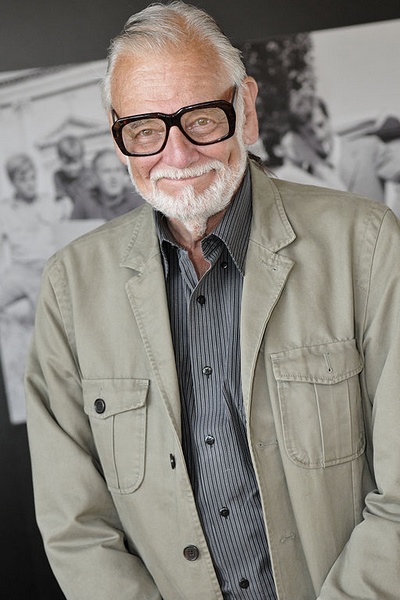 George A. Romero, a horror visionary who created the modern zombie genre with his 1968 cult film, “Night of the Living Dead,” which has influenced generations of horror enthusiasts, died on Sunday in Toronto. He was 77. His death came after “a brief but aggressive battle with lung cancer,” his family said in a statement. “Night of the Living Dead,” made for about $100,000, was released when racial tensions were high in the United States. Mr. Romero had not intended to address that climate in the film, but with Duane Jones, a black man, as the lead, it was impossible to ignore the connection, Mr. Romero told NPR in a 2014 interview. “We never thought of it being a racial piece at all, never,” he said. “But because the character was played by an African-American, you almost don’t notice anything else. We didn’t realize that. Duane did.” Continue reading the main story “I think that was largely what made the film noticeable,” he said. Mr. Romero went on to add installments to the “Dead” series, including “Dawn of the Dead” (1979) and “Day of the Dead” (1985). The film critic Roger Ebert called “Dawn of the Dead” “one of the best horror films ever made.’’ Mr. Romero’s “Land of the Dead” in 2005 was his largest-budget studio-backed film, and became one of his biggest box-office successes. Mr. Romero returned to independent filmmaking with “Diary of the Dead” (2008), and he described it as one that “comes from my heart.” “It’s not a sequel or a remake. It’s a whole new beginning for the dead,” Mr. Romero said, according to a biography provided by Peter Grunwald, a film producer who worked on several of Mr. Romero’s movies. “I have a soft spot in my heart for the zombies,” he told NPR. “They are multipurpose, you can’t really get angry at them, they have no hidden agendas, they are what they are. I sympathize with them.” Most recently, Mr. Romero tried his hand at comic books, creating “The Empire of the Dead” series starting in 2014, published by Marvel, which combines zombies and vampires. “I’m dabbling a little bit, mixing genres and metaphors,” he said, adding that he likes to incorporate political satire in his works, and that it is a bigger part of the comic. About adding vampires to his repertoire, Mr. Romero said that he has always seen them as quite villainous. "I grew up on the famous monsters of film land, so to me they’ve just been the villains all along. There are a few sort of ‘O.K.’ vampires in the story, but most of them are the oppressors,” he said. He also felt the need to move beyond zombies, he said, after the film “Zombieland” came out in 2009. “All of a sudden came ‘Zombieland,’” he said, which was one of the first zombie films to become a major blockbuster hit. “You know, gosh, all of a sudden, you can’t make a little zombie film anymore,” he said. His other films include “Knightriders” (1981), “Creepshow” (1982) and “Bruiser” (2001). George Andrew Romero was born on February 4, 1940, in the Bronx. He grew up a fan of classic movie monsters, and told NPR he did not expect to create a movement with his film. “All I did was I took them out of ‘exotica’ and I made them the neighbors,” he said. Mr. Romero graduated from the Carnegie Institute of Technology in Pittsburgh (now Carnegie Mellon University), where he had studied graphic arts, in 1960. He learned the film business working on the sets of movies. He is survived by his wife, Suzanne Desrocher Romero; his daughter, Tina; and two sons, Andrew and Cameron. Correction: July 18, 2017 An obituary on Monday about the filmmaker George A. Romero misstated the name of the university from which he graduated in 1960. It was the Carnegie Institute of Technology — not Carnegie Mellon University, which was established in 1967 when the Carnegie Institute of Technology merged with the Mellon Institute of Industrial Research. Correction: July 19, 2017 An earlier version of this obituary referred incorrectly to the producer Peter Grunwald. While he worked on several of Mr. Romero’s movies, he did not work on the original “Night of the Living Dead” or its first two sequels.
__________________
"I was going down on a chick who was 7 months pregnant when unexpectedly her unborn baby's tiny hand reached out and grabbed my face!" 
Last edited by Frothy Afterbirth : 07-20-2017 at 02:47 PM. |
|
#583
|
||||
|
||||
|
Roland Cazimero, Musician Who Helped Define Modern Hawaiian Culture, Dies At 66
July 18, 201711:00 AM ET Nat Chinen.  Roland Cazimero, a guitarist and singer who helped define the nobly mellifluous sound of contemporary Hawaiian music, primarily as one-half of The Brothers Cazimero, died in Honolulu on Sunday at 66 years old, his twin sister, Kanoe, confirmed. No cause of death was given, though the artist suffered in recent years from congestive heart issues, diabetes and carpal tunnel syndrome. The Brothers Cazimero, with Robert on upright bass and Roland on 12-string acoustic guitar, had been a cornerstone of the Hawaiian music scene for the last 40 years, and arguably its singlemost influential group during that time. The duo's trademark sound, liltingly sweet but rhythmically strong, was always distinguished by a full-bodied vocal blend: Robert, an exceptionally gifted singer, sang lead, while Roland handled the high harmonies, often in an imploring Hawaiian falsetto. The Brothers Cazimero took flight precisely in step with, and at the center of, a cultural movement called the Hawaiian Renaissance, propelled by musicians, artisans and custodians of ancient hula and chant. In cadence and repertoire, the group honored the root sources of Hawaiian music. But Roland and Robert also had an instinct for pop songcraft, creating music that combined traditional materials with the earnest gleam of mainland folk-rockers like Crosby, Stills & Nash. The self-titled debut album by The Brothers Cazimero was released in 1975; its most recent, Destiny, was released in 2008. The duo was a perennial favorite at the Na Hoku Hanohano Awards, Hawaii's version of the Grammys, winning enough "Song of the Year" honors to stock a compilation album, 20 Years of Hoku Award Winning Songs. As a live act, The Brothers Cazimero presented a study in contrasts; while Robert struck a tone of elegant precision, Roland played the part of a rascal and a wiseacre, which wasn't a stretch. Roland Kanoelani Cazimero was born 15 minutes after his sister Kanoe, in 1950, the youngest in a large family of 12 children, counting half-siblings. Their parents, William Ka`aihue Cazimero, Sr., and Elizabeth Kapeka Meheula, were local entertainers, and music was a constant presence around their house in the working-class Honolulu neighborhood of Kalihi. Roland graduated from Kamehameha High School in 1968, one year after Robert. Soon afterward they joined Peter Moon, a ukulele player and slack-key guitarist, in a group called The Sunday Manoa. Its 1969 album Guava Jam quickly became a bedrock document of the Hawaiian Renaissance, its declarative subtitle making plain their artistic intentions: "Contemporary Hawaiian Folk Music." Robert and Roland broke away from Sunday Manoa to form The Brothers Cazimero in 1974, becoming both torchbearers and cultural ambassadors. For a dozen years, beginning in the early '80s, they held a residency at the posh Monarch Room at the Royal Hawaiian Hotel, performing mainly to delighted tourists. They also toured widely, appearing at Carnegie Hall. Politically motivated civil disobedience was a key subtext of the Hawaiian Renaissance, and Roland counted himself an enthusiastic member of the resistance. "I've been supporting sovereignty from day one," he once told the Honolulu Star-Bulletin, recalling his efforts to house and supply the protesters who occupied the tiny island of Kaho`olawe in 1976. The following year, Roland collaborated with songwriter and chanter Keli`i Tau`a on an album called Hokule`a — The Musical Saga, paying tribute to the eponymous Polynesian voyaging canoe that traversed the oceans using only ancient navigation techniques. (The Hōkūle`a, a symbol of the Hawaiian renaissance, has remained active, completing a three-year circumnavigation of the globe just weeks ago.) Roland's first true solo effort was Pele, a 1979 concept album about the Hawaiian goddess of fire, complete with expository voiceover. The songs framed a mythological story in often personal terms, forming a clear narrative arc. The sound of the album combined pastoral folk with something approaching prog, as on a track called "A Promise Forgotten." Along with Robert and twin sister Kanoe, known as Tootsie, Roland is survived by his wife, Lauwa`e Cazimero; another brother, Rodney; and his children Hawai'iki Cazimero, John Devin Kumau C. McWilliams, Jonah Cazimero, Jordan Malama Cazimero-Chinen, and Justin Pono Cazimero-Chinen. The Brothers Cazimero played their last proper concert on Maui in 2014. Roland had to interrupt the performance, and was treated in a local hospital for walking pneumonia. During a recent interview with Leslie Wilcox for the PBS Hawaii program Long Story Short, Roland was asked whether Robert knew their playing days as The Brothers Cazimero were probably over. "I think he knows," he said. "I tell him that I'm very proud of him doing what he's doing, and that I want him to continue." He paused. "I miss playing with him a lot. I would love to play with him again, if possible."
__________________
"I was going down on a chick who was 7 months pregnant when unexpectedly her unborn baby's tiny hand reached out and grabbed my face!" 
|
|
#584
|
||||
|
||||
|
Linkin Park Frontman Chester Bennington Found Dead of Apparent Suicide
Jordan Runtagh People Magazine 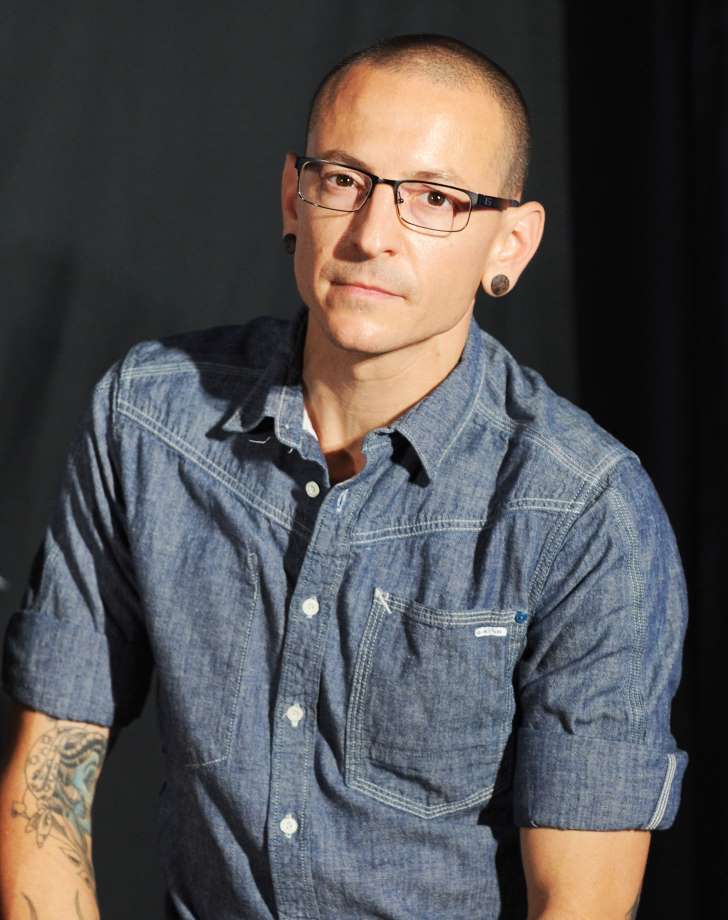 Chester Bennington, lead singer of the band Linkin Park, has committed suicide by hanging, TMZ reports. He was 41 years old. Bennington’s band mate, guitarist and vocalist Mike Shinoda, confirmed the news on Twitter Thursday, writing: “Shocked and heartbroken, but it’s true. An official statement will come out as soon as we have one.” Law enforcement officials told the outlet that his body was found just before 9 a.m. on Thursday in a private residence in Palos Verdes Estates, a district of Los Angeles Country. Officers responded to an emergency call in Palo Verdes Estates, California, around 9 a.m., police told PEOPLE. The rock frontman was a close friend of Soundgarden frontman Chris Cornell—who also committed suicide by hanging in May—and spoke at his funeral. Bennington’s body was found on what would have been Cornell’s 53rd birthday. Born in Phoenix, Arizona on March 20, 1976, Bennington suffered several childhood traumas that would haunt his life for years to come. His parents divorced when he was 11 and he was sent to live with his father, a police detective who specialized in child sex abuse case. It wasn’t until years later that Bennington revealed that he was a victim of sexual abuse at the hands of an older male friend beginning at just 7 years old. “It escalated from a touchy, curious, ‘what does this thing do’ into full-on, crazy violations,” he told Kernag in 2008. “I was getting beaten up and being forced to do things I didn’t want to do. It destroyed my self-confidence. Like most people, I was too afraid to say anything. I didn’t want people to think I was gay or that I was lying. It was a horrible experience. The sexual assaults continued until I was 13.” He eventually told his father about the abuse, but declined to pursue the case when he learned that the abuser was himself a victim. “I didn’t need revenge,” he told the Guardian later. The splintered family life coupled with vicious molestations triggered feelings of intense rage in the boy, and he sought solace in drugs. As a young teen he began using marijuana, opium, cocaine, meth, and LSD, as well as alcohol. High school was no less of a refuge. “I was knocked around like a rag doll at school, for being skinny and looking different,” he said later. At 17 he was sent to live with his mother, who largely confined him to the house when she learned of his burgeoning drug abuse. By the end of high school he began to explore music, notably in the Phoenix-area band Grey Daze. The group released three albums between 1993 and 1997, but failed to make an impact on the industry. On Halloween 1996, he married his first wife, Samantha Marie Olit, and worked at a digital services firm to make ends meet while he tried to make a living from his band. Discouraged, he nearly quit music altogether until Jeff Blue, the Vice President of A&R at Zomba Music in Los Angeles, suggested he audition with a group called Xero, who were looking to replace their recently departed lead singer. Bennington recorded an audition song—missing his birthday celebration in the process—and got the job in the spring of 1999, playing alongside Mike Shinoda, Brad Delson, Rob Bourdon, and Joe Hahn. They eventually took the name Linkin Park in honor of Santa Monica’s Lincoln Park. The band were rejected by nearly all the major (and independent) labels until Blue, now with Warner Brothers, signed them and financed sessions to re-record nine songs off their 1999 demo tape. This formed the basis of their breakthrough smash, Hybrid Theory, which became the best selling album 2001 and ultimately was certified Platinum by the RIAA. Many of they lyrics on the album inspired by the tumultuous emotions swirling inside Bennington as a result of his tortured upbringing. “It’s easy to fall into that thing – ‘poor, poor me’, that’s where songs like ‘Crawling’ come from: I can’t take myself,” he told Rolling Stone in 2002. “But that song is about taking responsibility for your actions. I don’t say ‘you’ at any point. It’s about how I’m the reason that I feel this way. There’s something inside me that pulls me down.” He leaves behind six children from his two marriages.
__________________
"I was going down on a chick who was 7 months pregnant when unexpectedly her unborn baby's tiny hand reached out and grabbed my face!" 
Last edited by Frothy Afterbirth : 07-20-2017 at 02:51 PM. |
|
#585
|
||||
|
||||
|
Sam Shepard, 73
Sam Shepard, the experimentalist cowboy-style poet who became one of the most significant American playwrights of the 20th century, honored with the 1979 Pulitzer Prize for drama for his play “Buried Child” and with an Oscar nomination for his acting role as aviator Chuck Yeager in the 1983 film “The Right Stuff,” died July 27 at his farm in Kentucky. He was 73. 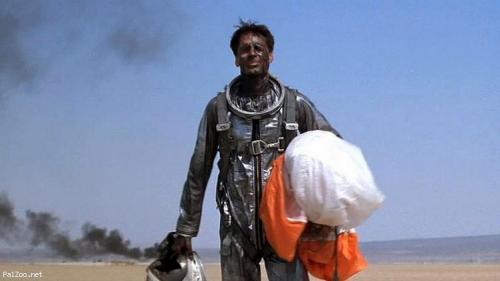 https://www.washingtonpost.com/local...e25_story.html 
__________________
 ... as I hooked my gnarled finger thru her nipple ring, and pulled her supple body toward mine ... |
|
#586
|
||||
|
||||
|
Code:
Content, Pictures and Download links visible to registered users only. REGISTER NOW to access all areas that are invisible to non-members. Last edited by Vodkaman : 07-31-2017 at 07:02 PM. |
|
#587
|
||||
|
||||
|
__________________
"I was going down on a chick who was 7 months pregnant when unexpectedly her unborn baby's tiny hand reached out and grabbed my face!" 
|
|
#588
|
||||
|
||||
|
Home Alone's John Heard Dead at 72; TV Roles Included The Sopranos
By Matt Webb Mitovich / July 22 2017, 6:51 AM PDT 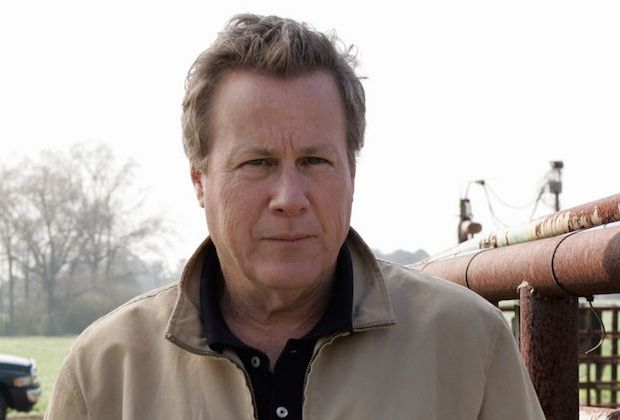 Veteran actor John Heard, familiar to many as Macaulay Culkin’s Home Alone pop, was found dead on Friday in a Palo Alto, Calif. hotel room. He was 72. A cause of death is not yet known, reports TMZ. On the smaller screen, Heard’s credits included CBS’ adaptation of the 1994 John Grisham film The Client, The Sopranos (for which he earned an Emmy nomination as corrupt cop Vin Makazian), Jack & Bobby, Prison Break (playing Sara Tancredi’s governor father), NCIS: Los Angeles and, most recently, spring episodes of Fox’s APB and WGN America’s Outsiders. In addition to his turns as Peter McCallister, Heard’s many film credits include Big, The Trip to Bountiful and Beaches. Code:
Content, Pictures and Download links visible to registered users only. REGISTER NOW to access all areas that are invisible to non-members.
__________________
"I was going down on a chick who was 7 months pregnant when unexpectedly her unborn baby's tiny hand reached out and grabbed my face!" 
|
|
#589
|
||||
|
||||
|
Jeanne Moreau, Femme Fatale of French New Wave, Is Dead at 89
By ANITA GATESJULY 31, 2017  Jeanne Moreau, the sensual, gravel-voiced actress who became the face of the New Wave, France’s iconoclastic mid-20th-century film movement, most notably in François Truffaut’s “Jules and Jim,” died on Monday at her home in Paris. She was 89. Her death was confirmed by the office of President Emmanuel Macron. Ms. Moreau, whom journalists liked to call the thinking moviegoer’s femme fatale, first came to American audiences’ attention in Louis Malle’s 1958 drama “The Lovers.” The film included a lengthy love scene in which Ms. Moreau, playing a bored housewife having an affair, enacted a clearly orgasmic moment, considered scandalous at the time. It was four years later, in “Jules and Jim,” that she became a full-fledged international star, playing Catherine, the capricious, destructive object of Oskar Werner and Henri Serre’s desire in a doomed ménage à trois. A successful stage actress in Paris, Ms. Moreau had a pouty, downturned mouth and circles under her eyes, and she was not generally considered photogenic. Making a score of mostly forgettable films from 1949 to 1957, she received the standard starlet treatment by makeup artists. It was Malle who, casting her in his first feature film, “Elevator to the Gallows,” shot her in natural light without heavy makeup, letting her hauntingly expressive face work its magic. Jeanne Moreau Was a Cinema Giant. Here’s Where to Stream 5 of Her Greatest Roles JULY 31, 2017 Ms. Moreau went on to particularly memorable roles as Marcello Mastroianni’s lonely wife in Michelangelo Antonioni’s classic “The Night” (1961), a controlling servant in Luis Buñuel’s “Diary of a Chambermaid” (1964), a coldhearted seducer in “Eva” (1962) and a vengeful newly wed-newly widowed in “The Bride Wore Black” (1968). Her awards came for lesser-known films. In 1960, she shared the Cannes Film Festival’s best actress prize for her role as a murder witness in Peter Brook’s psychological drama “Moderato Cantabile.” In Britain, she received its equivalent of the Academy Award, the Bafta, in 1967 for best foreign actress, for her role as Brigitte Bardot’s striptease partner in “Viva Maria!” And she finally won a best actress César, France’s equivalent of the Oscar, in 1992, for playing a con woman in the comedy “The Old Lady Who Walked in the Sea.” Ms. Moreau spent little time in Hollywood. She starred in John Frankenheimer’s war drama “The Train” (1964) opposite Burt Lancaster, played an aging European star in “The Last Tycoon” (1976) and did a cameo as an elderly descendant of Cinderella in “Ever After” (1998). She was directed by Orson Welles at least four times, all in European productions. Ms. Moreau continued to perform into her 80s. Her last screen appearance was in 2015, playing a small role (she had sought it out) as the protagonist’s grandmother in Alex Lutz’s film comedy “Le Talent de Mes Amis.” Ms. Moreau also acted onstage, winning in 1988 the Molière award in France for her performance in “Le Récit de la Servante Zerline,” and she had a singing career, releasing several albums. She directed three films, including a 1983 documentary about the silent-screen star Lillian Gish. Ms. Moreau was made an officer of the Legion of Honor and was the first woman inducted into the Académie des Beaux-Arts. Mr. Macron, the French president, said in a statement on Monday: “We could say about Jeanne Moreau that a part of cinema legend is gone. But her whole work was precisely about never freezing her art into a mythology, and never locking herself into the respectable status of the ‘great actress.’ She had in her eye a sparkle that deflected deference and inspired insolence, freedom, the turbulence of life that she liked so much and that she will long make us like.” Jeanne Moreau was born in Paris on Jan. 23, 1928, the daughter of the owner of a Montmartre hotel and restaurant and his British-born wife, a dancer at the Folies Bergère. Ms. Moreau decided to become an actress after seeing her first play, “Antigone,” when she was 15. When she told her father about her ambition, he slapped her. His opposition was an advantage in her eyes. “It forces you toward excellence,” she told a reporter for the French newspaper Le Figaro in 2001. “All my life I wanted to prove to my father that I was right.” She studied at the Conservatoire National d’Art Dramatique and, at 20, became the youngest-ever full-time member of the Comédie-Française, making her debut in Turgenev’s drama “A Month in the Country.” She later joined the Théâtre National Populaire. In 1953, she distinguished herself with that company in a production of “L’Heure Éblouissante” (“The Dazzling Hour”), by an Italian writer, Anna Bonacci. The play involved two main characters, a wife and a mistress, and when the other leading lady became ill, Ms. Moreau took on both roles. Fortunately, the two characters had no scenes together. Louis Malle cast her after seeing her in Peter Brook’s 1956 Paris production of “Cat on a Hot Tin Roof.” Ms. Moreau believed in surrendering to her directors, requiring what she called “a complete, unquestioning rapport.” The respect was usually mutual. In 1965, Truffaut told a reporter for Time magazine, “She has all the qualities one expects in a woman, plus all those one expects in a man — without the inconveniences of either.” Ms. Moreau was romantically linked with Truffaut and Malle, and had highly publicized romances with the fashion designer Pierre Cardin, the director Tony Richardson and the actor Lee Marvin. In 1949, she married Jean-Louis Richard, a French actor and screenwriter, with whom she had a son (born the day after their wedding). That marriage lasted two years, as did her second (1977-79), to the American director William Friedkin. She is survived by her son, Jérôme Richard, an artist. In a 2001 interview with Alan Riding of The New York Times, Ms. Moreau described her view of the human experience. “The cliché is that life is a mountain,” she said. “You go up, reach the top and then go down. To me, life is going up until you are burned by flames.” Benoît Morenne contributed reporting. Code:
Content, Pictures and Download links visible to registered users only. REGISTER NOW to access all areas that are invisible to non-members.
__________________
"I was going down on a chick who was 7 months pregnant when unexpectedly her unborn baby's tiny hand reached out and grabbed my face!" 
Last edited by Frothy Afterbirth : 08-02-2017 at 12:29 AM. |
|
#590
|
||||
|
||||
|
Jerry Lewis, a Jester Both Silly and Stormy, Dies at 91
By DAVE KEHRAUG. 20, 2017 Peter Keepnews and Jonah Engel Bromwich contributed reporting 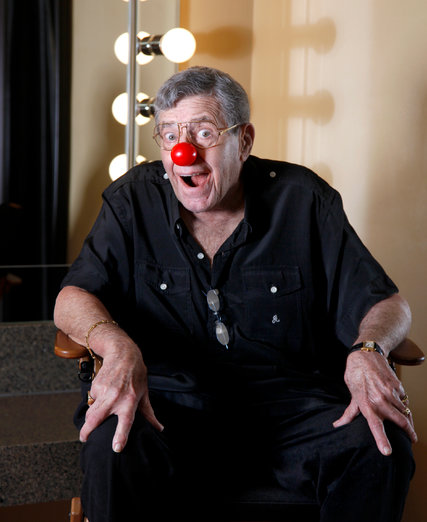 Jerry Lewis, the comedian, actor and filmmaker who was adored by many, disdained by others, but unquestionably a defining figure of American entertainment in the 20th century, died on Sunday morning at his home in Las Vegas. He was 91. His death was confirmed by his publicist, Candi Cazau. Mr. Lewis knew success in movies, on television, in nightclubs, on the Broadway stage and in the university lecture hall. His career had its ups and downs, but when it was at its zenith there were few stars any bigger. And he got there remarkably quickly. Barely out of his teens, he shot to fame shortly after World War II with a nightclub act in which the rakish, imperturbable Dean Martin crooned and the skinny, hyperactive Mr. Lewis capered around the stage, a dangerously volatile id to Mr. Martin’s supremely relaxed ego. After his break with Mr. Martin in 1956, Mr. Lewis went on to a successful solo career, eventually writing, producing and directing many of his own films. As a spokesman for the Muscular Dystrophy Association, Mr. Lewis raised vast sums for charity; as a filmmaker of great personal force and technical skill, he made many contributions to the industry, including the invention in 1960 of a device — the video assist, which allowed directors to review their work immediately on the set -still in common use. A mercurial personality who could flip from naked neediness to towering rage, Mr. Lewis seemed to contain multitudes, and he explored all of them. His ultimate object of contemplation was his own contradictory self, and he turned his obsession with fragmentation, discontinuity and the limits of language into a spectacle that enchanted children, disturbed adults and fascinated postmodernist critics. Jerry Lewis was born on March 16, 1926, in Newark. Most sources, including his 1982 autobiography, “Jerry Lewis: In Person,” give his birth name as Joseph Levitch. But Shawn Levy, author of the exhaustive 1996 biography “King of Comedy: The Life and Art of Jerry Lewis,” unearthed a birth record that gave his first name as Jerome. His parents, Danny and Rae Levitch, were entertainers — his father a song-and-dance man, his mother a pianist — who used the name Lewis when they appeared in small-time vaudeville and at Catskills resort hotels. The Levitches were frequently on the road and often left Joey, as he was called, in the care of Rae’s mother and her sisters. The experience of being passed from home to home left Mr. Lewis with an enduring sense of insecurity and, as he observed, a desperate need for attention and affection. An often bored student at Union Avenue School in Irvington, N.J., he began organizing amateur shows with and for his classmates, while yearning to join his parents on tour. During the winter of 1938-39, his father landed an extended engagement at the Hotel Arthur in Lakewood, N.J., and Joey was allowed to go along. Working with the daughter of the hotel’s owners, he created a comedy act in which they lip-synced to popular recordings. By his 16th birthday, Joey had dropped out of Irvington High and was aggressively looking for work, having adopted the professional name Jerry Lewis to avoid confusion with the nightclub comic Joe E. Lewis. He performed his “record act” solo between features at movie theaters in northern New Jersey, and soon moved on to burlesque and vaudeville. In 1944 — a 4F classification kept him out of the war — he was performing at the Downtown Theater in Detroit when he met Patti Palmer, a 23-year-old singer. Three months later they were married, and on July 31, 1945, while Patti was living with Jerry’s parents in Newark and he was performing at a Baltimore nightclub, she gave birth to the first of the couple’s six sons, Gary, who in the 1960s had a series of hit records with his band Gary Lewis and the Playboys. The couple divorced in 1980. Between his first date with Ms. Palmer and the birth of his first son, Mr. Lewis had met Dean Martin, a promising young crooner from Steubenville, Ohio. Appearing on the same bill at the Glass Hat nightclub in Manhattan, the skinny kid from New Jersey was dazzled by the sleepy-eyed singer, who seemed to be everything he was not: handsome, self-assured and deeply, unshakably cool. When they found themselves on the same bill again at another Manhattan nightclub, the Havana-Madrid, in March 1946, they started fooling around in impromptu sessions after the evening’s last show. Their antics earned the notice of Billboard magazine, whose reviewer wrote, “Martin and Lewis do an afterpiece that has all the makings of a sock act,” using showbiz slang for a successful show. Mr. Lewis must have remembered those words when he was booked that summer at the 500 Club in Atlantic City. When the singer on the program dropped out, he pushed the club’s owner to hire Mr. Martin to fill the spot. Mr. Lewis and Mr. Martin cobbled together a routine based on their after-hours high jinks at the Havana-Madrid, with Mr. Lewis as a bumbling busboy who kept breaking in on Mr. Martin — dropping trays, hurling food, cavorting like a monkey — without ever ruffling the singer’s sang-froid. The act was a success. Before the week’s end, they were drawing crowds and winning mentions from Broadway columnists. That September, they returned to the Havana-Madrid in triumph. Bookings at bigger and better clubs in New York and Chicago followed, and by the summer of 1948 they had reached the pinnacle, headlining at the Copacabana on the Upper East Side of Manhattan while playing one show a night at the 6,000-seat Roxy Theater in Times Square. The phenomenal rise of Martin and Lewis was like nothing show business had seen before. Partly this was because of the rise of mass media after the war, when newspapers, radio and the emerging medium of television came together to create a new kind of instant celebrity. And partly it was because four years of war and its difficult aftermath were finally lifting, allowing America to indulge a long-suppressed taste for silliness. But primarily it was the unusual chemical reaction that occurred when Martin and Lewis were side by side. Mr. Lewis’s shorthand definition for their relationship was “sex and slapstick.” But much more was going on: a dialectic between adult and infant, assurance and anxiety, bitter experience and wide-eyed innocence that generated a powerful image of postwar America, a gangly young country suddenly dominant on the world stage. Among the audience members at the Copacabana was the producer Hal Wallis, who had a distribution deal through Paramount Pictures. Other studios were interested — more so after Martin and Lewis began appearing on live television — but it was Mr. Wallis who signed them to a five-year contract. He started them off slowly, slipping them into a low-budget project already in the pipeline. Based on a popular radio show, “My Friend Irma” (1949) starred Marie Wilson as a ditsy blonde and Diana Lynn as her levelheaded roommate, with Martin and Lewis providing comic support. The film did well enough to generate a sequel, “My Friend Irma Goes West” (1950), but it was not until “At War With the Army” (1951), an independent production filmed outside Mr. Wallis’s control, that the team took center stage. “At War With the Army” codified the relationship that ran through all 13 subsequent Martin and Lewis films, positing the pair as unlikely pals whose friendship might be tested by trouble with money or women (usually generated by Mr. Martin’s character), but who were there for each other in the end. The films were phenomenally successful, and their budgets quickly grew. Some were remakes of Paramount properties — Bob Hope’s 1940 hit “The Ghost Breakers,” for example, became “Scared Stiff” (1953) — while other projects were more adventurous. “That’s My Boy” (1951), “The Stooge” (1953) and “The Caddy” (1953) approached psychological drama with their forbidding father figures and suggestions of sibling rivalry; Mr. Lewis had a hand in the writing of each. “Artists and Models” (1955) and “Hollywood or Bust” (1956) were broadly satirical looks at American popular culture under the authorial hand of the director Frank Tashlin, who brought a bold graphic style and a flair for wild sight gags to his work. For Mr. Tashlin, Mr. Lewis became a live-action extension of the anarchic characters, like Bugs Bunny and Daffy Duck, he had worked with as a director of Warner Bros. cartoons. Mr. Tashlin also functioned as a mentor to Mr. Lewis, who was fascinated with the technical side of filmmaking. Mr. Lewis made 16-millimeter sound home movies and by 1949 was enlisting celebrity friends for short comedies with titles like “How to Smuggle a Hernia Across the Border.” These were amateur efforts, but Mr. Lewis was soon confident enough to advise veteran directors like George Marshall (“Money From Home”) and Norman Taurog (“Living It Up”) on questions of staging. With Mr. Tashlin, he found a director both sympathetic to his style of comedy and technically adept. But as his artistic aspirations grew and his control over the films in which he appeared increased, Mr. Lewis’s relationship with Mr. Martin became strained. As wildly popular as the team remained, Mr. Martin had come to resent Mr. Lewis’s dominant role in shaping their work and spoke of reviving his solo career as a singer. Mr. Lewis felt betrayed by the man he still worshiped as a role model, and by the time filming began on “Hollywood or Bust” they were barely speaking. After a farewell performance at the Copacabana on July 25, 1956, 10 years to the day after they had first appeared together in Atlantic City, Mr. Martin and Mr. Lewis went their separate ways. For Mr. Lewis, an unexpected success mitigated the trauma of the breakup. His recording of “Rock-a-Bye Your Baby With a Dixie Melody,” belted in a style that suggested Al Jolson, became a Top 10 hit, and the album on which it appeared, “Jerry Lewis Just Sings,” climbed to No. 3 on the Billboard chart, outselling anything his former partner had released. Reassured that his public still loved him, Mr. Lewis returned to filmmaking with the low-budget, semidramatic “The Delicate Delinquent” and then shifted into overdrive for a series of personal appearances, beginning at the Sands in Las Vegas and culminating with a four-week engagement at the Palace in New York. He signed a contract with NBC for a series of specials and renewed his relationship with the Muscular Dystrophy Association — a charity that he and Mr. Martin had long supported — by hosting a 19-hour telethon. Mr. Lewis made three uninspired films to complete his obligation to Hal Wallis. He saved his creative energies for the films he produced himself. The first three of those films — “Rock-a-Bye Baby” (1958), “The Geisha Boy” (1958) and “Cinderfella” (1960) — were directed by Mr. Tashlin. After that, finally ready to assume complete control, Mr. Lewis persuaded Paramount to take a chance on “The Bellboy” (1960), a virtually plotless hommage to silent-film comedy that he wrote, directed and starred in, playing a hapless employee of the Fontainebleau Hotel in Miami Beach. It was the beginning of Mr. Lewis’s most creative period. During the next five years, he directed five more films of remarkable stylistic assurance, including “The Ladies Man” (1961), with its huge multistory set of a women’s boardinghouse, and, most notably, “The Nutty Professor” (1963), a variation on “Dr. Jekyll and Mr. Hyde,” in which Mr. Lewis appeared as a painfully shy chemistry professor and his dark alter ego, a swaggering nightclub singer. With their themes of fragmented identity and their experimental approach to sound, color and narrative structure, Mr. Lewis’s films began to attract the serious consideration of iconoclastic young critics in France. At a time when American film was still largely dismissed by American critics as purely commercial and devoid of artistic interest, Mr. Lewis’s work was held up as a prime example of a personal filmmaker functioning happily within the studio system. “The Nutty Professor,” a study in split personality that is as disturbing as it is hilarious, is probably the most honored and analyzed of Mr. Lewis’s films. (It was also his personal favorite.) For some critics, the opposition between the helpless, infantile Professor Julius Kelp and the coldly manipulative lounge singer Buddy Love represented a spiteful revision of the old Martin-and-Lewis dynamic. But Buddy seems more pertinently a projection of Mr. Lewis’s darkest fears about himself: a version of the distant, unloving father whom Mr. Lewis had never managed to please as a child, and whom he both despised and desperately wanted to be. “The Nutty Professor” transcends mere pathology by placing that division within the cultural context of the Kennedy-Hefner-Sinatra era. Buddy Love was what the midcentury American male dreamed of becoming; Julius Kelp was what, deep inside, he suspected he actually was. “The Nutty Professor” was a hit. But the studio era was coming to an end, Mr. Lewis’s audience was growing old, and by the time he and Paramount parted ways in 1965 his career was in crisis. He tried casting himself in more mature, sophisticated roles — for example, as a prosperous commercial artist in “Three on a Couch,” which he directed for Columbia in 1966. But the public was unconvinced. He seemed more himself in the multi-role chase comedy “The Big Mouth” (1967) and the World War II farce “Which Way to the Front?” (1970). But his blend of physical comedy and pathos was quickly going out of style in a Hollywood defined by the countercultural irony of “The Graduate” and “MASH.” After “The Day the Clown Cried,” his audacious attempt to direct a comedy-drama set in a Nazi concentration camp, collapsed in litigation in 1972, Mr. Lewis was absent from films for eight years. In that dark period, he struggled with an addiction to the pain killer Percodan. “Hardly Working,” an independent production that Mr. Lewis directed in Florida, was released in Europe in 1980 and in the United States in 1981. It referred to Mr. Lewis’s marginalized position by casting him as an unemployed circus clown who finds fulfillment in a mundane job with the post office. For Roger Ebert, writing in The Chicago Sun-Times, “Hardly Working” was “one of the worst movies ever to achieve commercial release in this country,” but the film found moderate success in the United States and Europe and has since earned passionate defenders. (continue)
__________________
"I was going down on a chick who was 7 months pregnant when unexpectedly her unborn baby's tiny hand reached out and grabbed my face!" 
|
 |
«
Previous Thread
|
Next Thread
»
| Thread Tools | |
| Display Modes | |
|
|
All times are GMT -5. The time now is 03:26 PM.











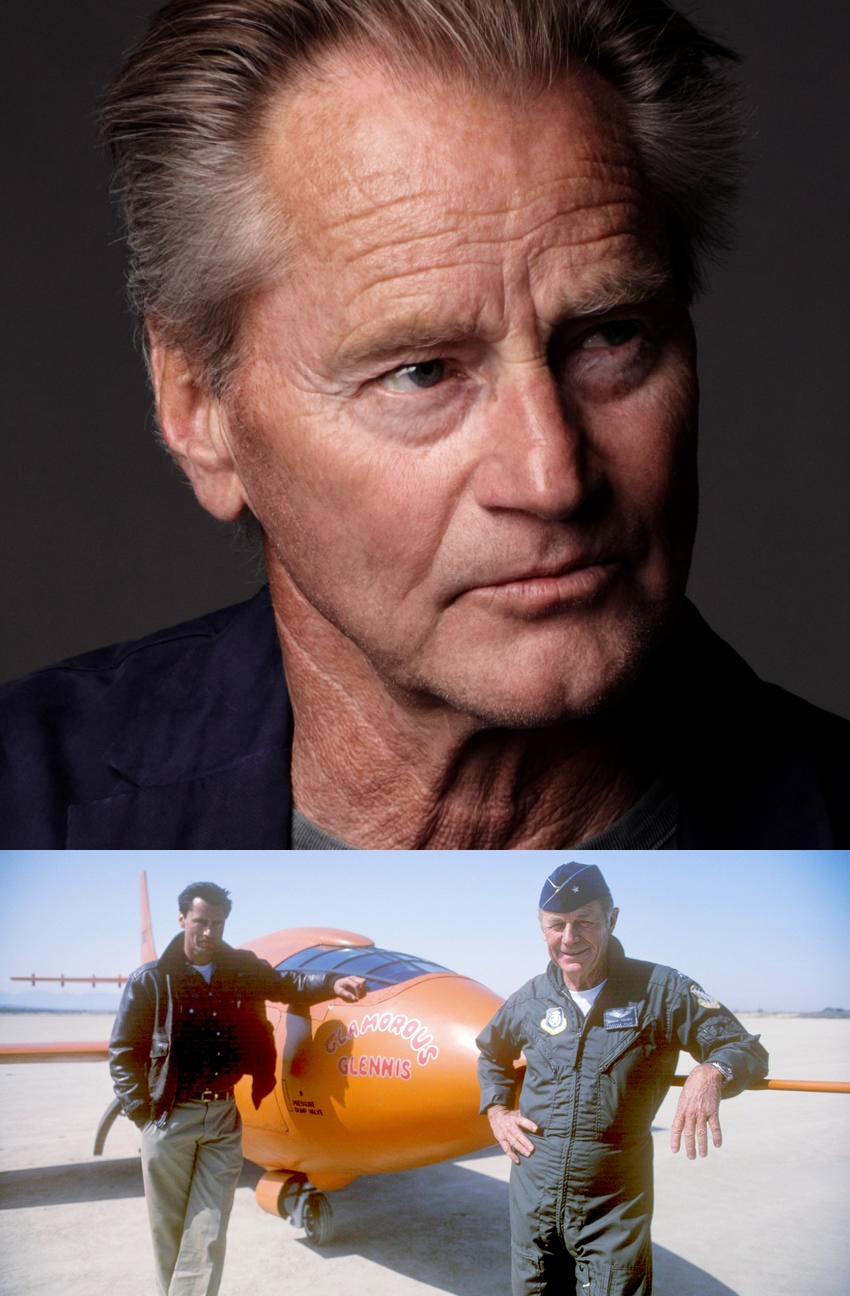


 Linear Mode
Linear Mode

